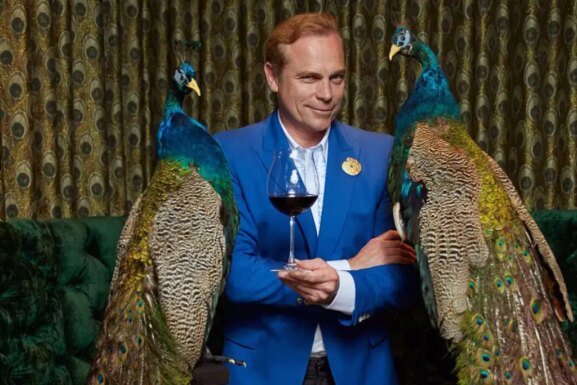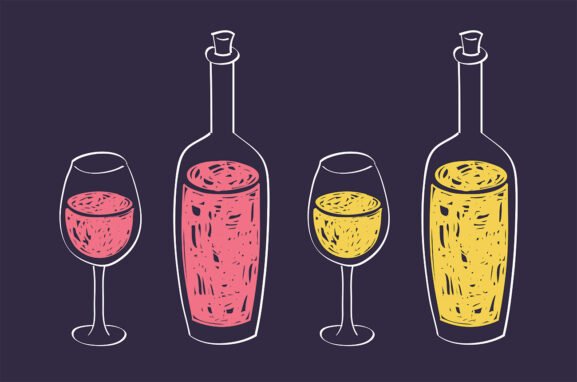Is the Industry Moving Past ‘Rosé All Day’?
Rosé has moved beyond its status as quintessential poolside sipper to full-on cultural icon.
Case in point: Social media is filled with hashtags and accounts associated with ubiquitous phrases like “yes way rosé,” “when there’s a will, there’s a rosé” and “rosé all day.” These terms are emblazoned across all kinds of gear, from t-shirts, caps and clutches to posters, bridal shower invitations and wine labels. At the same time, rosé has become a popular cocktail base, spawning a flurry of mixed drinks including fruit-flecked sangria, slushy frosé and rosé lemonade.
Yes, these vibrantly-hued beverages and bottles may make the perfect Instagram accessory. But, when mixed with other ingredients or guzzled like Gatorade? It’s safe to say that rosé’s often subtle and sophisticated aromas and flavors can be lost.
However, producers are increasingly attempting to shift the conversation—or at least add to it—by promoting serious, intentional interpretations of the summer staple.
“While the memes and taglines are amusing, they overlook the rich history and quality of this growing wine category,” says Francois Matton, CEO of Château Minuty.
Across Southern France, wineries have been upping the ante with higher production standards. For example, Château Gassier’s €70-a-bottle ELEVAE—a blend of Grenache, Syrah and Rolle (i.e. Vermentino)—spends two years in Austrian oak and boasts an aging potential of a decade. Château d’Esclans’ $139 Garrus uses Grenache sourced from century-old vines, entirely fermented and aged in new large French oak barrels.
Meanwhile, Gerard Bertrand’s Clos du Temple is grown via biodynamic principles, including the use of horses and mules in the vineyards. Grapes are hand-harvested and juice is matured in new barrels for six months on the lees. It costs a staggering $195 a bottle—more than 20 times the price of your average Trader Joe’s bottle.
But this growing movement of thoughtfully crafted rosés is happening far beyond the borders of France. Many of these wines are ripe for aging and offered at far more budget-conscious price points than their Mediterranean counterparts.
Bill Easton, winemaker and winegrower at Terre Rouge and Easton Wines in Northern California’s Sierra Foothills, has been making rosé since 1987—way before Summer Water or Bon Jovi’s Hampton Water were even a thought. His $30-a-bottle Vin Gris d’Amador is a Southern Rhône-style dry rosé made from Grenache, Mourvèdre and about 15% mixed whites including Grenache Blanc, Roussanne and Viognier.
To differentiate his rosé from the pink wines with which Americans were most accustomed until the past decade or so—a.k.a those made with sugary white Zinfandel—Easton decided to name it Vin Gris (“grey wine”). He admits the term is unlikely to catch on or go viral. But he’s not concerned.
Easton’s focus is on quality, not marketing or hype. “The French and Quebecois that sell my rosé call it a gastronomic rosé,” he says. “It ages and improves in the bottle, but starts getting very good one to two years after bottling.”

Domaine Carneros, in Napa Valley, has also jumped on the serious rosé bandwagon with its limited-release 2023 Avant-Garde Rosé. The $32 bottle is made from a blend of four distinct Pinot Noir clones that sit on the skins for three days before pressing. It is fermented in neutral oak barrels, where they are left to age for three months.
“The Avant-Garde Rosé is an intentional rosé, crafted from our estate vineyards,” says Domaine Carneros CEO Remi Cohen.
Also in the famed California growing region, R Inn Napa released a private-label rosé for its fifth annual “Rosé All May” celebration. The month-long salute offers guests the opportunity to experience rosé-paired prix fixe lunches at its Michelin-starred outdoor dining terrace, The Restaurant, as well as courtyard tastings featuring a different local rosé every day.
Even though the property has leaned into the hype (with rosé cocktails, poolside frosé and even a Rose Quartz Facial at The Spa), director of wine Kris Margerum is passionate about highlighting the best expressions of blush-hued wine.
“I call it ROI: Rosé of Intent,” he says. “When grapes are farmed to become rosé, they typically are picked at a point for higher acidity and lower alcohol.”

When shopping for bottles, Margerum seeks out rosés made with interesting varietals, like the $25 Cabernet Franc rosé from Lieu Dit in Santa Barbara or the allocated Petite Sirah and Cabernet Sauvignon rosé from Gallica in St. Helena.
“You wouldn’t think [Petite Sirah] would make a delicate rosé, but the winemaker’s style is so beautiful,” says Margerum. “It’s grown to become a rosé and they pick it to have it all make sense for that wine.”
It’s this sort of thoughtfully crafted rosé that elevates the category, delivering nuanced red fruit flavors and refreshing acidity.
Though it’s unlikely “rosé all day” culture will go anywhere anytime soon—nor do many want it to. After all, #rosé is big business. But the winemakers who have invested their time and resources into making intentional wines are glad more consumers ready to look past the cheesy t-shirts and hashtags.
“There is a lot of hype out there,” says Easton. “I don’t like hype. #Nohype!”
More Rosé Coverage

From the Shop
Find Your Wine a Home
Our selection of red wine glasses is the best way to enjoy the wine’s subtle aromas and bright flavors.
Published: June 18, 2024

